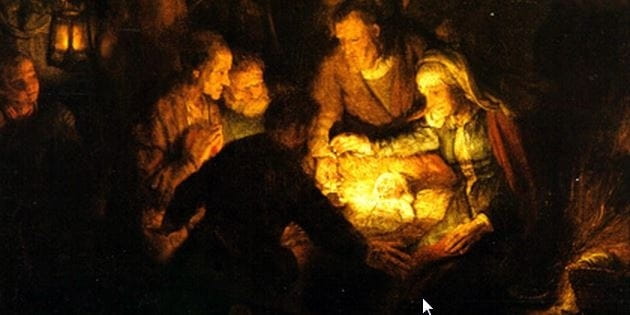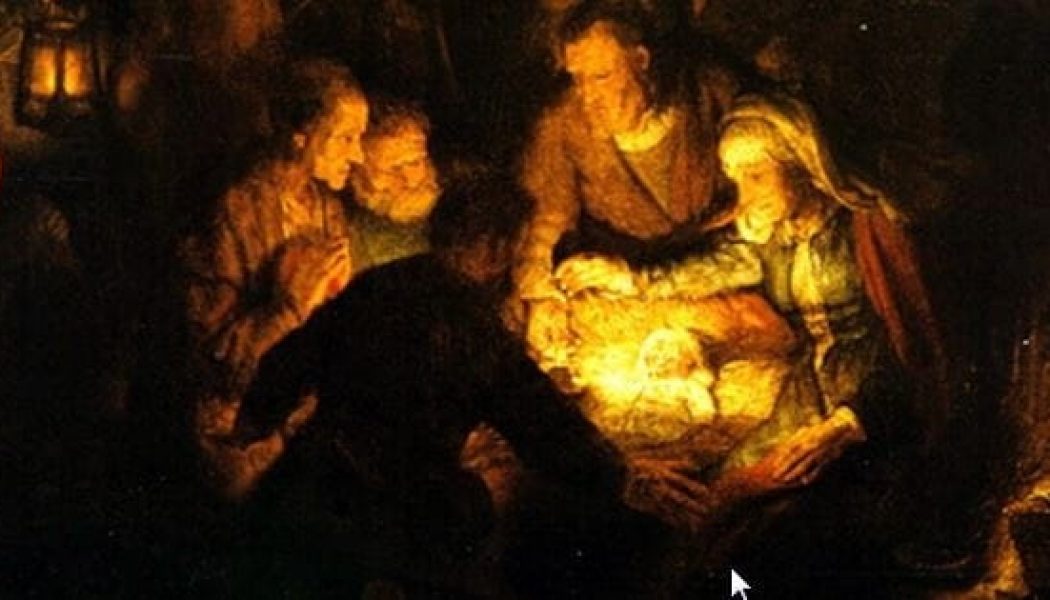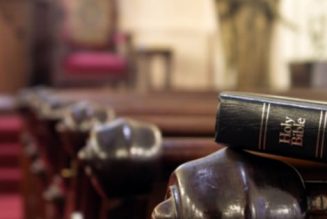
Introduction
The third Sunday in Advent (Advent III) shifts from a tone of expectation of Christ’s coming to one of rejoicing at the arrival of God’s kingdom with the coming of Jesus.
The Scripture and Theology of the Third Week of Advent
Scripture readings for Advent III reflect on the salvation and restoration Jesus brings, which is cause for rejoicing and perseverance.
Old Testament Readings
Old Testament readings for Advent III highlight the universal restoration Jesus accomplishes. In Isaiah 35:1, the prophet looks forward to the future promised for the people of God—a future inaugurated at the first coming of Christ and consummated at his second coming. When Jesus returns, the effects of sin’s curse will be removed: the wildernesses and dry land will blossom, and streams will come forth from the desert. The miracles he did point to his kingdom: “Then the eyes of the blind shall be opened, and the ears of the deaf unstopped; then shall the lame man leap like a deer, and the tongue of the mute sing for joy” (Isaiah 35:5-6).
Isaiah 61:1, Isaiah 61:8 shows God’s concern for those on the fringes of society—those who have no voice of their own and cannot speak for themselves. The Messiah has been anointed by God to bring good news to the poor and liberty to the captives, proclaiming the year of the Lord’s favor and the day of God’s vengeance. God is one who loves justice and mercy, and in his coming kingdom those who suffer from injustice will be restored. The coming Christ “will save the lame and gather the outcast, and [he] will change their shame into praise and renown in all the earth” (Zephaniah 3:19).
Readings from the Psalms
The Psalms for Advent III carry on the theme of the justice and mercy brought about by God’s coming kingdom. Psalms 146:4 says that the one “who executes justice for the oppressed, who gives food to the hungry” is blessed. The Lord opens the eyes of the blind, lifts up the downcast, keeps watch over sojourners, and upholds widows and orphans (146:8-9). When God brings restoration to his people, there will be laughter and joy, and tears shall be turned into shouts of joy (Psalms 126:5).
New Testament Readings
New Testament readings in the third week of Advent show how believers are motivated to wait patiently for Jesus’ return. As 1 Thessalonians 5:16 says, patience should be accompanied by rejoicing, prayer, and thanksgiving as well as abstaining from evil. God is faithful, and he is the one who will sanctify us, so Christians can be sure that we will be kept blameless at Christ’s second coming. Only God’s power can do this, and “He who calls you is faithful; he will surely do it” (1 Thess. 5:24). Philippians 4:4 continues the theme of rejoicing, because God’s peace for those in Christ will guard our hearts and minds.
Gospel Readings
Gospel readings for Advent III return to John the Baptist, but in a way that points from him to Jesus. In Matthew 11:2, John hears rumors about what Jesus was doing and asks him (through his disciples) “Are you the one who is to come, or shall we look for another?” Jesus responds to John’s followers: “Go and tell John what you hear and see: the blind receive their sight and the lame walk, lepers are cleansed and the deaf hear, and the dead are raised up, and the poor have good news preached to them” (Matt. 11:4-5). Jesus’ answer is incredibly fitting—“look at what I’m doing,” he says. “You know that the Messiah will bring healing to those in need, and that’s exactly what I bring.”
John the Baptist came as a witness, “to bear witness about the light, that all might believe through him” (John 1:8). John came to bear witness about the light, who is Jesus. John claimed, “I am the voice of the one crying out in the wilderness, ‘Make straight the way of the Lord,’ as the prophet Isaiah said.” (John 1:23).
John preached the gospel to the people—the good news of God’s coming kingdom of justice and peace (Luke 3:18).
The Symbolic Spirituality of the Third Week of Advent
The Jesse Tree
During the third week of Advent, the Jesse Tree recounts the story of how God’s people often failed, revealing their deep need for a Savior. The branches on the tree this week are crooked and deathly-looking, with few leaves on them. Through the stories of David (1 Samuel 16:1, 2 Samuel 5:1, 2 Samuel 7:1), Elijah (1 Kings 17:1, 1 Kings 18:17), Hezekiah (2 Kings 18:1), Isaiah (Isaiah 1:10, Isaiah 6:1, Isaiah 8:11), Jeremiah (Jeremiah 2:4, Jeremiah 7:1, Jeremiah 8:22), Habakkuk (Habakkuk 1:1, Habakkuk 3:16), and Nehemiah (Nehemiah 1:1, Nehemiah 6:15, Nehemiah 13:10), the Jesse Tree narrates Israel’s fall into exile and her waiting for the Messiah.
The Advent Wreath
A third candle—a pink one—is lit on the Advent Wreath for Advent III. This candle, often called the Shepherd’s Candle or the Joy Candle, represents joy, such as the joy the shepherds experienced when the angel told them that Christ was to be born. The Advent season is now half over, and Jesus’ coming—both his first coming, liturgically, and his second coming, historically—is nearer now than it was two weeks ago.
Conclusion
More than any other week during the Advent season, Advent III represents a shift in attitude. One moves from hope, repentance, and fear of the coming Judge to rejoicing at the coming of salvation and the kingdom of God as Jesus makes all things new.
These Advent rhythms represent shifts that we often experience in our Christian lives. Some days we feel like the injustices in this world are more than we can handle, some days we anguish over our sin, and others we long for the day when God will finally defeat the last great enemy, death. Advent III helps us move out of these moods and into rejoicing, because God has come to save us and to be with us, and he will come again.









